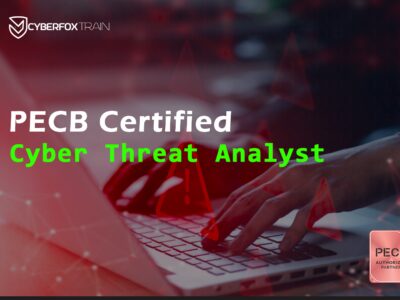The Certified Information Security Risk Officer (CISRO) course is a globally aligned training program designed to equip professionals with comprehensive knowledge of information security risk governance, assessment, and management. This course prepares participants to identify, evaluate, and mitigate information security risks across modern digital enterprises, aligning with global standards such as ISO/IEC 27005, NIST RMF, and COBIT. Whether you are managing enterprise risk, IT security, compliance, or business continuity, CISRO empowers you with tools, frameworks, and hands-on skills for real-world applications.
🎯 Course Objectives:
By the end of the CISRO course, participants will be able to:
- Understand key principles of information security risk management.
- Identify, analyze, and prioritize security risks in business environments.
- Apply global standards and risk frameworks (ISO 27005, NIST RMF).
- Conduct effective risk assessments and design mitigation strategies.
- Build, implement, and maintain risk registers and dashboards.
- Align risk management with enterprise security policies and compliance goals.
Benefits:
One of the paramount benefits of information security risk management is its ability to provide a proactive approach towards safeguarding an organization’s valuable assets. By identifying, assessing, and mitigating potential risks, businesses can effectively protect their sensitive information from unauthorized access or malicious activities.
The keyword here is “proactive,” as it highlights the importance of staying ahead rather than reacting once a security breach occurs. With a robust risk management strategy in place, companies can anticipate and address vulnerabilities before they turn into major threats. This not only enhances overall operational resilience but also helps maintain customer trust and confidence in an increasingly interconnected digital landscape.
Furthermore, effective information security risk management ensures compliance with industry regulations and legal requirements, which are crucial for organizations operating within highly regulated sectors such as finance or healthcare.
In this way, by prioritizing proactive risk assessment and mitigation measures, businesses can actively mitigate potential harm and minimize the financial impact associated with data breaches or cyber-attacks while upholding their commitment to confidentiality, integrity, and availability of critical information resources.
Agenda
Module 1: Information Security Basics
Module 2 : Information Security Risk Assessments
- Introduction
- What is Risk?
- Going Deeper with Risk
- Components of Risk
- Putting it All Together
- Information Security Risk
- What is an Information Security Risk Assessment?
- Why Assess Information Security Risk?
- Risk Assessments and the Security Program
- Information Risk Assessments Activities in a Nutshell
Module 3: Information Security Risk Assessment
- Data Collection
- Introduction
- The Sponsor
- The Project Team
- The Size and Breadth of the Risk Assessment
- Scheduling and Deadlines
- Assessor and Organization Experience
- Workload
- Data Collection Mechanisms
- Collectors
- Containers
- Executive Interviews
- Document Requests
- IT Asset Inventories
- Asset Scoping
- Interviews
- Asset Scoping Workshops
- Business Impact Analysis and Other Assessments
- Critical Success Factor Analysis
- The Asset Profile Survey Who Do You Ask for information?
- How Do You Ask for the Information? • What Do You Ask for?
- The Control Survey
- Who Do You Ask for Information? • How Do You Ask for Information?
- What Do You Ask for?
- Organizational vs. System Specific
- Scale vs. Yes or No
- Inquiry vs. Testing
- Survey Support Activities and Wrap-Up • Before and During the Survey • Review of Survey Responses.
- Post-Survey Verifications
- Consolidation
Module 4 Information Security Risk Assessment
- Data Analysis
- Introduction
- Compiling Observations from Organizational
- Risk Documents
- Preparation of Threat and Vulnerability Catalogs
- Threat Catalog
- Vulnerability Catalog
- Threat Vulnerability Pairs
- Overview of the System Risk Computation
- Designing the Impact Analysis Scheme
- Confidentiality
- Integrity
- Availability
- Preparing the Impact Score
- Designing the Control Analysis Scheme
- Designing the Likelihood Analysis Scheme
- Exposure
- Frequency
- Controls
- Likelihood
- Putting it Together and the Final Risk Score
Module 5 Information Security Risk Assessment
- Risk Assessment
- Introduction
- System Risk Analysis
- Risk Classification
- Risk Rankings
- Individual System Risk Reviews
- Threat and Vulnerability Review
- Review Activities for Organizational Risk
- Review of Security Threats and Trends
- Review of Audit Findings
- Review of Security Incidents
- Review of Security Exceptions
- Review of Security Metrics
- Risk Prioritization and Risk Treatment
Module 6 Information Security Risk Assessment
- Risk Prioritization and Treatment
- Introduction
- Organizational Risk Prioritization and Treatment
- Review of Security Threats and Trends
- Review of Audit Findings
- Review of Security Incidents
- Review of Security Exceptions
- Review of Security Metrics
- System Specific Risk Prioritization and Treatment
- Issues Register
Module 7 Information Security Risk Assessment
- Reporting
- Introduction
- Risk Analysis Executive Summary
- Methodology
- Organizational
- System Specific
- Results
- Organizational Analysis
- System Specific
- Risk Registe
Module 8 Information Security Risk Assessment
- Maintenance and Wrap Up
- Introduction
- Process Summary
- Data Collection
- Data Analysis
- Risk Analysis
- Reporting
- Key Deliverables
- Post Mortem
- Scoping
- Executive Interviews
- System Owners and Stewards
- Document Requests
- System Profile and Control Survey
- Analysis
- Reporting
- General Process
Eligibility
- Managers or consultants seeking to prepare and support an organization in planning, implementing, and maintaining a compliance program based on the any Information Security compliances
- CISRO is responsible for maintaining conformance with the Data Privacy compliances as well
- Members of Information security, Incident management and Information Security Risk
- Technical and compliance experts seeking to prepare for a CISRO role.
- Expert advisors involved in the security of personal data and Infostructure.
Course Features
- Lecture 0
- Quiz 0
- Duration 4 days
- Skill level Intermediate
- Language English
- Students 0
- Assessments Yes
Requirements
- Basic understanding of cybersecurity or IT governance
- Familiarity with information systems
- No formal certification required, but prior experience in GRC, IT audit, or security operations is beneficial
Features
- Aligned with ISO 27005, NIST Risk Management Framework, COBIT
- Real-world case studies and interactive risk assessments
- Hands-on workshops for building risk registers and controls
- Expert-led training from certified security professionals
- Downloadable templates, risk models, and tools
- Internationally recognized certification by Brit Certifications & Assessments (BCAA, UK)
- Cyberfox Train Authorized partner for International market.
Target audiences
- Chief Information Security Officers (CISOs)
- Risk & Compliance Managers
- IT & Network Security Officers
- Auditors and Governance Professionals
- Data Protection Officers (DPOs)
- Cybersecurity Consultants
- Anyone involved in managing risk in IT or security functions






